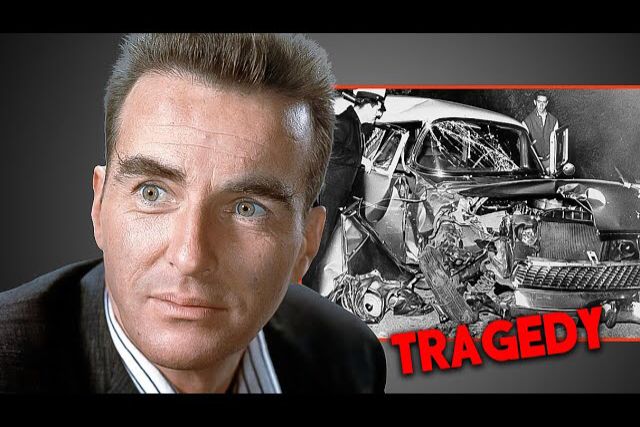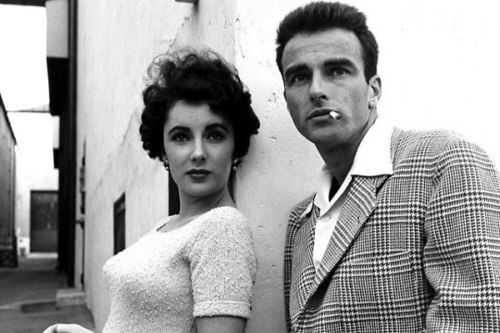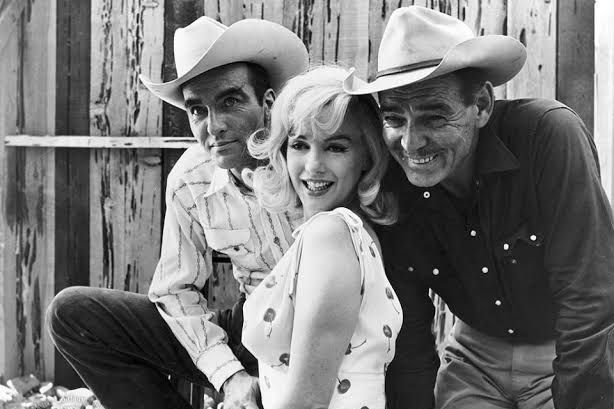1. The Traumatic Car Crash of 1956

The pivotal and nearly fatal car accident, which occurred during the filming of Raintree County, shattered Clift’s face and changed his life irrevocably. Leaving a dinner party at his friend Elizabeth Taylor’s home, he lost control of his car and crashed into a telephone pole, suffering a broken jaw, fractured sinuses, and deep lacerations. Taylor famously crawled into the wreck to save him from choking on his teeth. This brutal physical trauma was the catalyst for the self-destructive spiral that followed, forever dividing his career into “before” and “after.”
2. Descent into Prescription Drug Addiction

The excruciating physical pain following the accident and extensive reconstructive surgery led Clift to develop a crippling dependency on painkillers. Already struggling with alcohol, his substance abuse escalated dramatically in an attempt to manage chronic discomfort and the lingering physical effects of his injuries. This reliance on prescription narcotics and liquor became a core feature of his final decade, severely impacting his reliability and focus on film sets, and contributing to his profound health decline.
3. The Loss of His “Beautiful” Profile

Prior to the accident, Clift was celebrated for his chiseled, delicate, and strikingly handsome features, which were essential to his matinee idol status. The car crash and subsequent plastic surgery fundamentally altered his appearance, leaving a perceptible asymmetry and reduced facial movement, especially on the left side. While he remained a talented and magnetic actor, the loss of his famed profile contributed to his deep insecurities and reinforced a public narrative that prematurely aged and damaged his image, making the already self-critical star withdraw further.
4. The Burden of Repressed Sexuality

In an era when homosexuality was a career-ending secret and socially condemned, Clift lived a difficult and conflicted double life. Despite some biographers suggesting that his family was surprisingly modern and accepting, the necessity of being closeted within the strict, conformist studio system and public eye created immense internal strain. This burden of secrecy fueled his neuroses and self-loathing, isolating him from truly open relationships and contributing to the inner turmoil that he attempted to numb with substances.
5. A Difficult Reputation for Hollywood

Clift was known for his intense dedication to the craft, being one of the first Method actors in Hollywood, but this dedication often translated into difficult and exacting behavior on set. He was particular about his material, directors, and even his dialogue, sometimes resisting the established studio machine. After the accident, his increasing unreliability, erratic behavior, memory problems, and physical decline caused by addiction further cemented his reputation as uninsurable and hard to work with, leading to fewer and fewer significant offers.
6. Rejecting the Studio System’s Conformity

Clift was one of the earliest major actors to refuse a long-term studio contract, insisting on choosing his own roles and maintaining artistic autonomy. While this choice allowed him to select complex, challenging material that cemented his legendary status, like A Place in the Sun and From Here to Eternity, it also meant he lacked the powerful safety net and sustained employment provided by the rigid, protective, but demanding studio structure. This independence meant he bore the full weight of his professional choices and personal struggles alone.
7. Turning Down Iconic Film Roles

Clift’s meticulous nature and demanding criteria for projects led him to reject numerous roles that later became cinematic milestones for other actors. He was reportedly the first choice for parts in Sunset Boulevard, High Noon, and East of Eden, among others. While selective to the point of turning down blockbusters, this pattern of refusal limited his total body of work to only 17 films over 18 years, creating long periods of unemployment and further alienating him from the commercial, money-making machine of Hollywood.
8. The Enduring Friendship with Elizabeth Taylor

The intense, non-sexual relationship between Clift and Elizabeth Taylor was a defining, yet sometimes complicated, source of connection and codependency. Taylor was his fierce protector, especially after his accident when she saved his life and became a tireless advocate for him in Hollywood. While a vital support system, their intense bond may have inadvertently reinforced his isolation from other, more conventional relationships and kept him tethered to the high-pressure world of celebrity from which he yearned to escape
9. Physical Ailments Beyond the Accident

Clift’s poor health extended beyond his injuries and substance abuse; he suffered from chronic issues, including colitis and dysentery that worsened over time. The autopsy after his death also revealed an underactive thyroid, which can lower blood pressure and cause symptoms that mimic intoxication or drug effects, such as sluggishness and poor coordination, even when sober. These genuine medical conditions complicated his perception in the public eye, often leading others to unfairly attribute his physical state entirely to drugs and alcohol.
10. The Loneliness of an Outsider Artist

Despite his immense talent and fame, Clift remained a deeply introspective, sensitive, and reclusive individual who never comfortably fit into the Hollywood social scene. He spent a significant portion of his life residing in New York, deliberately distanced from the industry’s epicenter in Los Angeles. This preference for isolation, coupled with his internal struggles and secretive personal life, meant that in his final years, he had few genuine companions to buffer him from his own self-destructive tendencies, leading to an increasing and palpable loneliness.
11. Visible Scars and Altered Movements

The decade following the car crash saw Clift continue to work, but his physical state was often painfully evident on screen. His features were visibly taut from surgery, and his movements occasionally appeared less fluid and more deliberate. This decline in his vibrant physical screen presence, which was a hallmark of his early work, provided a visible public chronicle of his suffering and addiction, making the personal tragedy a part of his professional output for all to witness.
12. The Troubled Production of The Misfits

Clift’s collaboration with Marilyn Monroe and Clark Gable on The Misfits (1961) was a highly anticipated event that became infamous for its troubled production. Both Clift and Monroe were struggling with severe substance abuse and emotional turmoil at the time, leading to lengthy delays and on-set drama. Monroe famously commented that Clift was “the only person I know who’s in worse shape than I am,” a tragic summation that underscored the depths of his deteriorating condition, even in the company of Hollywood’s most fragile stars.
13. The Paradox of Post-Accident Performances

Despite his profound personal decline, Clift delivered some of his most raw, emotionally complex, and acclaimed performances in the years following the accident. His powerful, brief role in Judgment at Nuremberg (1961), as a mentally disabled victim of Nazi sterilization, earned him his fourth Academy Award nomination. These later performances were often infused with a palpable pain and vulnerability, leading critics and audiences to connect his private suffering with the depth of his on-screen work, a true paradox of personal ruin fueling artistic brilliance.
14. His Final, Difficult Film Role

Clift’s last completed film was The Defector (1966), a spy thriller filmed in Germany. By this time, his health was severely compromised; he was bloated, tremulous, and his once-silken hair had thinned. The film’s intense physical demands were a visible struggle for him. The production was fraught with difficulties related to his declining state, marking a poignant, challenging, and somewhat ignominious end to his filmography just months before his death, showcasing the total toll his lifestyle had taken.
15. The Financial Pressures of Uninsurability

Due to his increasingly erratic behavior and documented substance abuse, Clift became considered a high-risk liability by film studios, eventually reaching a point where he was effectively uninsurable. This financial blackballing severely limited the number and quality of roles he was offered, not because of a lack of talent, but because of the practical, expensive risks he posed to a film’s budget and schedule. The inability to work regularly stripped him of his primary purpose and creative outlet, compounding his feelings of worthlessness and despair.
16. A Heart Attack Due to Chronic Disease

The official cause of death was determined by the medical examiner to be a heart attack resulting from “occlusive coronary artery disease.” The autopsy found no evidence of foul play or suicide. However, the years of severe alcohol and prescription drug abuse, coupled with his pre-existing medical conditions, had taken a terminal toll on his cardiovascular system. His death was a quiet, physical culmination of a decade of self-destruction—a final, silent collapse in his own home.
On July 23, 1966, Clift’s personal secretary and live-in companion, Lorenzo James, found him dead in his New York City townhouse after receiving no response to his calls. The actor was 45 years old. James, following Clift’s strict instructions not to call a doctor for anything, waited before seeking help, underscoring the star’s desperate need for privacy even in his final moments. The discovery was not made by a loved one but by an employee, highlighting his solitary end.
This story The Strange Fall of Montgomery Clift: 16 Ways Hollywood’s “Beautiful Loser” Died in Silence was first published on Daily FETCH


